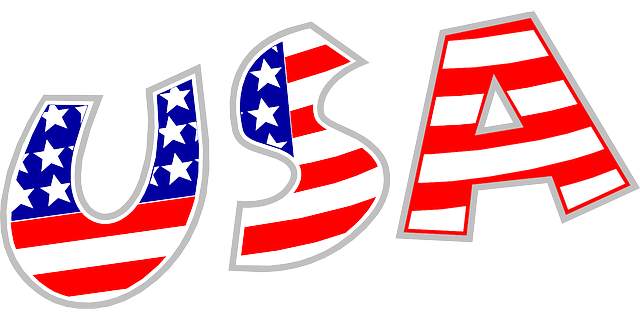The Tea Stained American Flag is a significant historical artifact that symbolizes America's struggle for independence and the values of liberty and resistance that were central to the nation's founding. Authentic tea stains on these flags, reminiscent of the Boston Tea Party, highlight a pivotal moment in history where colonial dissent against British taxation policies led to the iconoclastic destruction of East India Company tea. These flags are not just relics but embody the American resilience and identity, blending history with artistic expression to inspire and educate. Crafting authentic replicas involves meticulous attention to detail, using historical records to accurately recreate the flag's design and aging process. The result is a tangible connection to American history that offers an immersive experience for collectors and those interested in early American symbolism. In educational settings, these tea-stained flags provide an authentic backdrop for learning about the Boston Tea Party and its influence on American values and governance, emphasizing their role in preserving history and educating future generations.
Embark on a journey through time with the intriguing narrative of the Tea Stained American Flag, an emblem rich in history and symbolism. This article delves into its origins, the craftsmanship that brings replicas to life, and the pivotal role these flags play in education and historical reenactments. Discover the nuances that distinguish different versions of this iconic banner, ensuring an authentic representation of early American history.
- Unraveling the History and Significance of the Tea Stained American Flag
- Craftsmanship and Authenticity: The Making of a Genuine Replica
- A Visual Guide to Identifying Different Versions of the Tea Stained Flag
- The Role of the Tea Stained Flag in Historical Reenactments and Education
Unraveling the History and Significance of the Tea Stained American Flag

The Tea Stained American Flag is a poignant artifact that encapsulates a pivotal moment in early American history. This flag, which bears an authentic tea stain, serves as a tangible reminder of the Boston Tea Party, a historic event in 1773 where colonists protested against British taxation policies by destroying a valuable cargo of East India Company tea. The stains themselves are not mere accidents but intentional markers of rebellion and resistance, symbolizing the colonists’ dissent towards the unfair economic practices imposed by the British government. These flags were used in reenactments and have since become a significant part of American heritage, reflecting the values of liberty, democracy, and defiance that were integral to the founding of the nation.
The significance of the Tea Stained American Flag extends beyond its historical context; it represents a broader narrative of American identity and resilience. The act of staining the flag with tea is not just a testament to the event but also an artistic expression that blends history with artistry. These flags, often handcrafted by skilled artisans who adhere to historical accuracy, are cherished not only for their role in the past but also for their ability to inspire and educate present and future generations about the spirit of resistance and the quest for independence that shaped a nation. The Tea Stained American Flag remains an enduring symbol of American history, one that continues to be revered and replicated to this day.
Craftsmanship and Authenticity: The Making of a Genuine Replica

Craftsmanship and authenticity are paramount in the creation of a genuine replica of early American flags, particularly when recreating a Tea Stained American Flag, which holds significant historical importance. Skilled artisans employ meticulous techniques to ensure that each stitch and color match the original designs used during the colonial era. The process begins with a careful examination of historical records and images to accurately depict the flag’s design, including the precise arrangement of stars and stripes as well as the specific materials used in the 18th century.
The authenticity extends beyond the visual aspects; it encompasses the textures and materials that give the replica a tangible connection to its historical counterpart. For instance, the wool and cotton fabrics used are representative of those available at the time. The oxidation and aging process that gives the flag a worn, antique look is achieved through careful application of natural dyes and stains, mimicking the effects of weathering over time. Particular attention is given to replicating the tea-staining effect on the flag, which not only adds historical accuracy but also imbues the replica with a unique charm that resonates with viewers, connecting them to the pivotal events of American history. This commitment to craftsmanship and authenticity ensures that each replica is not just a representation of a bygone era but a bridge between past and present, allowing individuals to experience a piece of history in a tangible and profound way.
A Visual Guide to Identifying Different Versions of the Tea Stained Flag

When delving into the rich tapestry of American history, one cannot overlook the significance of historical artifacts that capture the essence of the era. Among these, the Tea Stained American Flag holds a particularly distinguished place. This guide aims to illuminate the key features that distinguish different versions of this iconic flag from its contemporaries. The original Tea Stained American Flag, which dates back to the 18th century, is characterized by its distinctive tea-stained hues and subtle tonal variations across its canvas. The stars are typically rendered in a palette of faded blues and whites, with each star unique in its shading, reflecting the artisanal techniques of the time. The stripes, alternating red and white, may exhibit a muted color spectrum due to the age and preservation methods, adding an authentically aged appearance that is both striking and historically accurate. To identify a genuine Tea Stained American Flag replica, one must look for these specific characteristics: the star arrangement, the pattern of the stripes, and the overall hue of the fabric. Each flag’s unique features contribute to its historical significance and make it a fascinating subject for collectors and history enthusiasts alike. When acquiring a Tea Stained American Flag replica, it is crucial to ensure that the craftsmanship accurately represents these nuances, providing an educational and authentic experience of early American symbolism.
The Role of the Tea Stained Flag in Historical Reenactments and Education

The tea-stained American flag holds a significant place in historical reenactments and educational programs, serving as a tangible link to our nation’s past. These flags, with their distinctive markings from tea and other natural substances used during reenactments, authentically recreate the appearance of the original banners that flew during pivotal moments of early American history. In the realm of educational outreach, these replicas are instrumental in bringing history to life for students and enthusiasts alike. They enable a more immersive experience, allowing participants to engage with and understand the symbolism and context behind the American flag’s evolution. Historical reenactments where tea-stained flags are employed offer a vivid portrayal of events like the Boston Tea Party, fostering an appreciation for the heritage and values that have shaped our nation’s identity. These replicas serve as a powerful educational tool, prompting discussions about the significance of such historical acts and their influence on modern American governance and societal norms. They also underscore the importance of preserving history through authentic representation and education.
